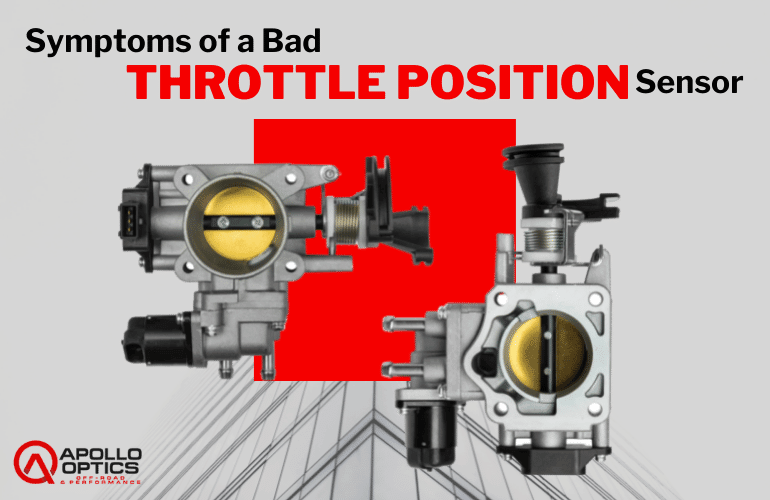 At times, even the most reliable of vehicles experience their share of mechanical issues. When such a situation arises, a motorist is left shaking their head in dismay while contemplating the root cause of their vehicle’s issue. Luckily, not all failures of this nature are as dire as one might initially believe. Quite the contrary, many issues experienced along the road or trail can be remedied in short order by recognizing individual symptoms of the underlying failure.
At times, even the most reliable of vehicles experience their share of mechanical issues. When such a situation arises, a motorist is left shaking their head in dismay while contemplating the root cause of their vehicle’s issue. Luckily, not all failures of this nature are as dire as one might initially believe. Quite the contrary, many issues experienced along the road or trail can be remedied in short order by recognizing individual symptoms of the underlying failure.
One such issue that can often be identified by the onset of resulting symptoms is that of a failing throttle position sensor. In fact, a faulty throttle position sensor can pose a host of driveability concerns, many of which tend to seem unconnected at the time they occur.
The following guide will help you understand the valuable role that a TPS (throttle position sensor) plays in your vehicle's operation and will identify several common symptoms that often accompany a failure of this type.
What is a Throttle Position Sensor?
In order to run and run efficiently, a gasoline engine requires air, fuel, and a properly timed spark. While injectors handle matters pertaining to fuel injection/delivery, and the ignition system distributes spark, an engine’s throttle body meters the flow of intake air. This air is subsequently mixed with fuel and combustion within an engine’s cylinders.
An engine’s throttle body serves as the gatekeeper for all air entering the intake manifold. This assembly is positioned between the engine’s intake tract and the intake manifold itself. A throttle body features an open central channel, which is round in shape and features a throttle plate or butterfly valve. This plate, when actuated, opens and closes to differentiate the amount of air that passes through the throttle body as a whole.
In the past, most throttle control came as the product of a throttle cable’s connection between a vehicle’s gas pedal and throttle valve. As a motorist depressed their vehicle’s accelerator pedal, the corresponding cable would open the throttle plate, thus increasing the volume of air intake. An engine’s fuel management system would then increase the rate of fuel delivery to each injector, thereby intensifying combustion as a result.
However, the development of better technology and the tightening of emissions standards have effectively antiquated cable-driven throttle bodies. Today, vehicles utilize “drive-by-wire” throttle systems, which rely upon the use of various sensors to facilitate their function. The actuation of an engine’s throttle plate is now controlled via an electrical signal.
As a driver depresses their vehicle’s accelerator pedal, data regarding the pedal position is relayed to the engine’s ECU (electronic control unit). The ECU then makes several determinations, including that which pertains to fuel injection system efficiency, ignition timing, and throttle position.
However, an engine’s control system requires feedback regarding throttle plate positioning in order to make all necessary calculations. This is where an engine’s throttle position sensor comes into play. A TPS determines the relative position of the throttle body’s butterfly and relates this information back to the vehicle’s ECU.
Throttle position sensors come in a variety of configurations, the most common of which include potentiometers and non-contact sensors. Potentiometers vary return voltage by sweeping an integrated finger across a resistive strip. This resisted voltage is then translated by a vehicle’s engine management software to determine throttle plate position. Alternatively, most non-contact sensors rely upon the use of magnets, which induce a variable magnetic field that changes with throttle plate motion.
Why Do TPS Sensors Go Bad?
Much like any sensor, throttle position sensors are prone to wearing out with time. In many cases, TPS failure comes as a product of component wear, which is incurred by repetitive motion of the throttle plate under normal circumstances.
Earlier potentiometer style throttle position sensors are especially prone to age-related wear, due to the nature of their construction. As a potentiometer’s finger sweeps across its resistive surface, contact surface material is gradually worn away.
This, in turn, has the potential to cause dead spots within the normal sweep of a potentiometer’s range. This most commonly occurs when a vehicle is regularly driven at a particular speed, such as 70 MPH on the highway, as contact wear in this range is accelerated.
Non-contact sensors have proven to be somewhat more durable, though they are not impervious to eventual failure. Failures of this nature often come as the result of damage to one or more of a non-contact throttle position sensor’s magnets. When this occurs, the magnetic field that is relied upon to provide predictable output is compromised.
Additionally, throttle position sensors of any type can experience wiring or connector-related failures. Damaged wiring or bent connector pins can create an open condition in any of a sensor’s individual circuits. Such issues can be reliably diagnosed with the aid of a quality voltmeter or digital multimeter.
Symptoms of a Bad TPS
When a throttle position sensor fails or is in the process of failing, a number of symptoms can present themselves. However, it is important to understand that a TPS sensor does not always fail in a given manner. Therefore, one of these symptoms often differs on a case-by-case basis.
The following are several of the most common symptoms of a failing throttle position sensor.
Check Engine Light
When a TPS sensor begins to fail, a diagnostic trouble code is often stored. As a result, you might notice the illumination of a check engine light on your vehicle’s instrument cluster. This occurs when your vehicle’s ECM receives what it determined to be irrational data from one or more sensors. In this case, an engine’s TPS has relayed data outside of that which was anticipated by the ECM, based upon the throttle plate’s position in relation to throttle demands.
Lack of Power or Failure to Accelerate
Many vehicles are designed to limit an engine’s power in the event that a throttle system-related issue is detected. Many refer to this reduction in power as “limp home mode” because engine output is drastically reduced. In some cases, a vehicle’s top speed will actually be limited to a threshold that has been predetermined by the manufacturer.
Hesitation at Set Speed
In many cases, a failing TPS will cause a vehicle to hesitate when attempting to accelerate past a particular speed. This is especially common when the TPS in question is of a potentiometer-style design. Sensors of this type are prone to accelerated wear across their resistive strip, thereby causing a “dead” spot when under acceleration.
Unexpected Acceleration
In rare cases, a faulty TPS sensor can lead to periods of unanticipated acceleration. However, this seldom occurs in late model vehicles as most newer cars, trucks, and SUVs default into limp mode should such a failure occur.
Stalling at Idle
In certain cases, a failing TPS can lead to irregularities or even stalling when at idle. While many engines feature an air idle control valve that facilitates air flow under no-load conditions, a faulty TPS can prevent an ECM from sending commands to this valve. If a faulty TPS has led a vehicle’s ECM to believe that the engine is not at idle, stalling can occur.
Poor Fuel Economy
A faulty TPS can also lead to pain at the pump. Since a vehicle’s fuel delivery is determined in accordance with the amount of airflow entering an engine’s intake, a failed TPS can skew these numbers in an undesirable direction. In many cases, a vehicle’s fuel economy can suffer by as much as 2-3 MPG.

